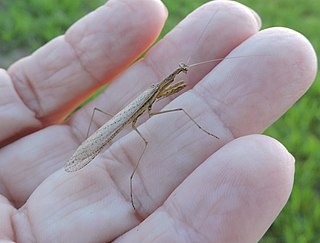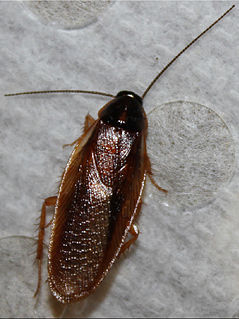
Mantidae is one of the largest families in the order of praying mantids, based on the type species Mantis religiosa; however, most genera are tropical or subtropical. Historically, this was the only family in the order, and many references still use the term "mantid" to refer to any mantis. Technically, however, "mantid" refers only to members of the family Mantidae, and not the 14 remaining families of mantises. Some of the most recent classifications have promoted a number of the mantid subfamilies to the rank of family, e.g. Iridopterygidae, Sibyllidae, Tarachodidae, Thespidae, and Toxoderidae, while other classifications have reduced the number of subfamilies without elevating to higher rank.

Empusidae is a family of plant-mimicking mantids, consisting of 10 genera, holding almost 30 species. Unlike many other mantid families, the Empusidae are a monophyletic lineage. Empusidae mantids are ambush predators, with mouthparts adapted to feeding on other insects and small animals. The majority of Empusidae species are distributed throughout Africa, but they are also found in Southeast Asia and in the southern parts of Europe.

Mantoida is a genus containing eleven species of mantis. It is placed in family, Mantoididae.

Amorphoscelidae is a family of mantises in the order Mantodea.

Hymenopodidae is a family of the order Mantodea (mantises), which contains six subfamilies. Some of the species in this family mimic flowers and are found camouflaged among them; these are called flower mantises. Their coloration is aggressive mimicry, luring prey to approach close enough to be seized and eaten.

Liturgusidae is a family of praying mantids in the new (2019) Neotropical superfamily Acanthopoidea. A substantial number of genera, previously placed here, have recently been moved to the new or revived other families:
Oligonicella scudderi, common name Scudder's mantis or slender prairie mantid, is a species of praying mantis native to the southern United States. It is a small brown insect; the males can fly but the females are wingless.

Tarachodidae is a now obsolete family in the order Mantodea, of genera found in Africa and Asia.

Thespidae is a family of Neotropical insects in the order Mantodea. Following a major revision of this order in 2019, the old-world subfamilies Haaniinae and Hoplocoryphinae, previously placed here, have been upgraded to family level.

Iridopterygidae was a family of praying mantids in the order Mantodea whose members, having formerly been moved here as a subfamily within Mantidae, have now been transferred elsewhere as part of the recent (2019) major revision of mantid taxonomy.
The Toxoderidae are a family of mantises in the order Mantodea; there are three tribes in the single subfamily Toxoderinae.

Acanthopidae is a family of mantises consisting of 16 genera in the order Mantodea. The group was first formally split off as a separate family by the German entomologist Reinhard Ehrmann in 2002. In 2016, five genera were moved from Acanthopidae to the newly created family Acontistidae, but this has not been accepted in most recent classifications.

Mantises are an order (Mantodea) of insects that contains over 2,400 species in about 430 genera in 15 families. The largest family is the Mantidae ("mantids"). Mantises are distributed worldwide in temperate and tropical habitats. They have triangular heads with bulging eyes supported on flexible necks. Their elongated bodies may or may not have wings, but all Mantodea have forelegs that are greatly enlarged and adapted for catching and gripping prey; their upright posture, while remaining stationary with forearms folded, has led to the common name praying mantis.

Miomantinae is the larger subfamily of insects in the new (2019) family Miomantidae of order Mantodea. As part of a major revision of mantid taxonomy; an additional subfamily Solygiinae contains the sole genus Solygia and the tribe Rivetinini has essentially been elevated to family Rivetinidae. A number of genera have also been transferred from here to the Hierodulinae.

Parcoblatta bolliana, Boll's wood cockroach or Boll's wood roach, is a small species of wood cockroach native to the United States, measuring around 11 mm (0.43 in) long.
Arenivaga bolliana, known generally as the Boll's sand cockroach or Boll's sandroach, is a species of cockroach in the family Corydiidae. It is found in North America.
Thespinae is a subfamily of mantids in the family Thespidae. There are 16 genera and at least 40 described species: found in Australasia, Central and South America.













